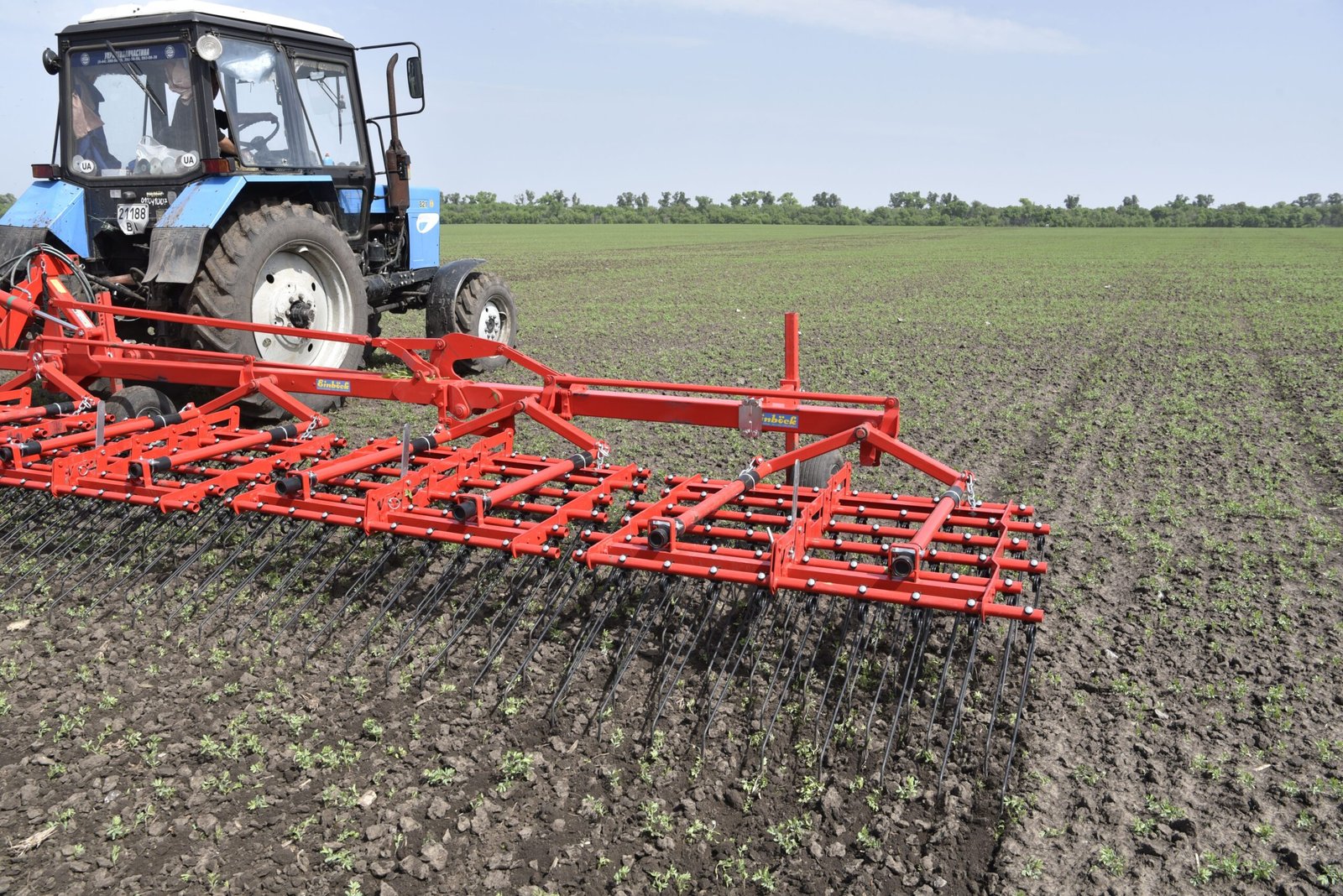Picture this: it’s 1996, and a farmer in Georgia is looking at rows of cotton plants being ravaged by bollworms, while his neighbor struggles with weeds choking out soybeans. Fast forward to today, and that same farm is thriving with crops that can defend themselves against insects and survive targeted herbicide applications. This isn’t science fiction—it’s the reality of genetically engineered agriculture that has fundamentally transformed farming across the American South.
The Bt Cotton Revolution That Saved Southern Agriculture

GMO cotton was created to be resistant to bollworms and helped revive the Alabama cotton industry. When Bt cotton first arrived in the South in 1996, farmers were skeptical about this new technology that promised to fight off destructive pests from within the plant itself. The genetically modified cotton contained genes from a soil bacterium called Bacillus thuringiensis, which produces proteins toxic to specific insects but harmless to humans and beneficial insects like ladybugs. Bt cotton acreage also expanded, from 15 percent of U.S. cotton acreage in 1997 to 37 percent in 2001. In 2024, 90 percent of U.S. cotton acres were planted with genetically engineered, insect-resistant seeds. This dramatic shift wasn’t just about convenience—it was about survival for an industry that had been hemorrhaging money to pest damage. Early differences in adoption rates of these two GE crops may be related to the fact that insect infestations tend to be more severe in warmer climates. Cotton growing areas are concentrated in the Southeastern United States and the Southern Plains, which tend to be warmer than growing areas in the Midwest, where most U.S. corn production takes place. Before Bt cotton, farmers often sprayed their fields multiple times per season, creating a chemical treadmill that was both expensive and environmentally concerning.
How Glyphosate-Resistant Soybeans Transformed Weed Management

The introduction of herbicide-tolerant soybeans in the late 1990s was like giving Southern farmers a magic wand for weed control. Based on USDA survey data, the percent of domestic soybean acres planted with HT seeds rose from 17 percent in 1997 to 68 percent in 2001, before plateauing at 94 percent in 2014. In 2024, HT soybean acreage reached its highest adoption at 96 percent. These genetically engineered soybeans could survive applications of glyphosate, a broad-spectrum herbicide that kills most other plants but leaves the modified crop unharmed. This technology revolutionized farming practices because farmers could now spray their entire fields with a single herbicide after planting, eliminating the need for multiple chemical applications or intensive cultivation to control weeds. When farmers use these herbicide-tolerant crops they do not need to till the soil, which they normally do to get rid of weeds. This no-till planting helps to maintain soil health and lower fuel and labor use. Taken together, studies have shown positive economic and environmental impacts. The economic benefits were immediate and substantial—farmers saved money on fuel, labor, and multiple herbicide applications while often seeing improved yields from better weed control.
Corn’s Genetic Makeover for Southern Fields

While corn isn’t traditionally thought of as a Southern crop like cotton, genetically modified corn varieties have found their place in Southern agriculture, particularly in states like Texas, Georgia, and North Carolina. In 2024, approximately 90 percent of domestic corn acres were planted with HT seeds. Domestic Bt corn acreage grew from approximately 8 percent in 1997 to 19 percent in 2000, before climbing to 86 percent in 2024. The development of Bt corn was particularly valuable in warmer Southern climates where corn borers and rootworms can devastate crops. Bacillus thuringiensis (Bt) corn is a GMO corn that produces proteins that are toxic to certain insect pests but not to humans, pets, livestock, or other animals. These are the same types of proteins that organic farmers use to control insecticides, and they do not harm beneficial insects, such as ladybugs. GMO Bt corn reduces the need for spraying insecticides while still preventing insect damage. Southern farmers appreciated this dual benefit because it meant fewer trips across the field with spray equipment and reduced exposure to chemical pesticides. Think of it like having a personal bodyguard for each corn plant—the protection is built right in, working 24/7 without any additional effort from the farmer.
Sugar Beets: The Sweet Success Story of Genetic Engineering

GM sugar beets are grown by more than 95 percent of the nation’s sugar beet farmers. While sugar beets aren’t exclusively a Southern crop, their genetic modification story is particularly relevant because it demonstrates how quickly farmers can embrace new technology when it solves real problems. Since 2009, the nation’s sugar beet crop has been almost entirely planted in seed genetically modified to resist glyphosate herbicide, which is produced at Bayer’s Soda Springs plant in Idaho. Lately, to strike a chord with an increasingly environmentally conscious consumer base, the sugar beet industry has been touting how biotechnology has made its crop production system far more sustainable. The herbicide-resistant sugar beets allowed farmers to control weeds with unprecedented precision and efficiency. The glyphosate sprayed on GM beet fields significantly reduces weed growth, and thus has decreased the demand for migrant workers, who have historically been employed as seasonal workers to pull weeds on conventional sugar beet farms in the United States. This technological shift didn’t just change farming practices—it altered the entire labor structure of sugar beet production, reducing the need for seasonal hand-weeding crews and allowing farmers to manage larger acreages with less manual labor.
Canola’s Northern Journey to Southern Fields

In 2013, GMO canola made up 95% of canola planted while GMO sugar beets made up 99.9% of all sugar beets harvested. Canola might not be the first crop that comes to mind when thinking about Southern agriculture, but genetically modified canola varieties have made inroads into some Southern states, particularly for biodiesel production and specialty oil markets. GMO canola is used mostly to make cooking oil and margarine. Canola seed meal can also be used in food for animals. Canola oil is used in many packaged foods to improve food consistency. Most GMO canola is resistant to herbicides and helps farmers to more easily control weeds in their fields. The herbicide-resistant trait in canola provided the same weed management benefits that made soybeans and cotton so successful. Southern farmers who experimented with canola found that the genetically modified varieties offered them new market opportunities while fitting well into their existing crop rotation systems. The ability to control weeds with a single herbicide application made canola production more economically viable in regions where labor costs for weed management had previously made the crop unprofitable.
The Economic Engine Behind Genetic Transformation

The financial impact of genetically engineered crops on Southern agriculture has been nothing short of remarkable. Over the period 1996 to 2020, the economic benefits have been significant with farm incomes for those using the technology having increased by $261.3 billion US dollars. This equates to an average farm income gain across all GM crops grown in this period of about $112/hectare. For Southern farmers, these weren’t just numbers on a spreadsheet—they represented the difference between profitability and financial struggle. With higher yields and less time and money spent managing pests and weeds, farmers have earned higher incomes. This has proven to be especially valuable for farmers in developing countries where, over the 25 year period 1996–2020, an average $5.22 was received for each extra dollar invested in biotech crop seeds. The cost savings came from multiple sources: reduced pesticide applications, lower fuel costs from fewer field operations, decreased labor requirements, and often improved yields from better pest and weed control. Southern farmers quickly learned that while GM seeds cost more upfront, the total production costs often decreased significantly.
Environmental Benefits That Surprised Everyone

When genetically engineered crops first arrived, environmental groups were largely skeptical. However, the environmental benefits that emerged surprised many observers, particularly in terms of reduced pesticide use and improved soil conservation practices. Herbicide-resistant crop technology has led to a 239 million kilogram (527 million pound) increase in herbicide use in the United States between 1996 and 2011, while Bt crops have reduced insecticide applications by 56 million kilograms (123 million pounds). While herbicide use increased, the shift was from multiple applications of various chemicals to fewer applications of less toxic compounds. When farmers use herbicide-tolerant crops, they reduce the need to till the soil to control weeds. No-till planting helps to improve soil health, reduce soil erosion, lower fuel and labor use, and reduce the amount of carbon dioxide released into the atmosphere. Southern farmers, who had been battling severe soil erosion for generations, found that no-till farming practices enabled by herbicide-resistant crops helped preserve their most valuable asset—topsoil. The reduction in diesel fuel consumption from fewer tillage operations also contributed to lower carbon emissions, making Southern farms more environmentally sustainable.
Labor Transformation in Southern Agriculture

The adoption of genetically engineered crops fundamentally changed the labor dynamics of Southern agriculture, often in ways that weren’t immediately obvious. Traditional cotton and soybean production required intensive labor for pest scouting, multiple pesticide applications, and cultivation for weed control. With Bt cotton and herbicide-resistant soybeans, farmers could manage larger acreages with fewer workers, and the work itself became less physically demanding and dangerous. The glyphosate sprayed on GM beet fields significantly reduces weed growth, and thus has decreased the demand for migrant workers, who have historically been employed as seasonal workers to pull weeds on conventional sugar beet farms in the United States. This shift allowed many farm operations to transition from seasonal hired labor to year-round employees who could focus on equipment maintenance, crop monitoring, and other skilled tasks. The reduction in pesticide applications also meant fewer health risks for farm workers, addressing long-standing concerns about chemical exposure in agricultural communities. Some farmers used their labor savings to diversify into other crops or add value-added enterprises like direct marketing or agritourism.
Technology Adoption Rates That Broke Records

The speed at which Southern farmers adopted genetically engineered crops was unprecedented in agricultural history. Currently, more than 90 percent of U.S. corn, upland cotton, and soybeans are produced using GE varieties. This wasn’t a gradual transition spread over decades—it happened in just a few years as farmers saw immediate benefits in their neighbors’ fields. Since GMOs were approved for commercial use, and then first planted into U.S. soil in 1996, their production has increased dramatically. More than 90% of all soybean cotton and corn acreage in the U.S. is used to grow genetically engineered crops. Southern farmers, known for their practical approach to farming, didn’t adopt this technology because of marketing hype—they adopted it because it worked. The peer-to-peer learning that occurred at coffee shops, farm supply stores, and field days accelerated adoption as farmers shared real-world results with their neighbors. Word spread quickly that these new varieties could solve problems that had plagued Southern agriculture for generations, from bollworm resistance to labor shortages to soil erosion.
Resistance Management: Learning from Early Mistakes

The success of genetically engineered crops in the South also brought important lessons about resistance management and the need for sustainable farming practices. The common Midwestern rotation of HR corn-HR soybeans, or HR soybeans-HR cotton in the South, exposes weed populations to annual and repetitive glyphosate-selection pressure. These factors trigger a perfect storm for the emergence of GR weeds. Southern farmers learned this lesson the hard way when Palmer amaranth and other aggressive weeds developed resistance to glyphosate. Resistant Palmer amaranth (Amaranthus palmeri) has spread dramatically across southern states since the first resistant populations were confirmed in 2005, and already poses a major economic threat. This challenge forced farmers to become more sophisticated in their weed management strategies, using multiple modes of action and returning to some integrated pest management practices. The industry responded by developing crops with multiple herbicide resistance traits, and farmers learned to rotate between different weed control strategies. Rather than abandoning the technology, Southern farmers adapted their practices to preserve its long-term effectiveness.
Stacked Traits: The Next Level of Genetic Engineering

As genetically engineered crops matured, plant breeders developed varieties with multiple traits “stacked” into a single plant, providing Southern farmers with even more comprehensive solutions. The figures below illustrate increases in adoption rates for stacked varieties, which have both (in some cases, multiple) HT and Bt traits. Adoption of stacked varieties has accelerated in recent years. Approximately 87 percent of cotton acres and 83 percent of corn acres were planted with stacked seeds in 2024. These stacked trait varieties represented the culmination of genetic engineering technology, offering farmers protection against multiple pests while maintaining herbicide tolerance. For Southern cotton farmers, this meant protection against bollworms, budworms, and other caterpillar pests, plus resistance to herbicides for weed control, all in a single variety. The convenience factor was enormous—farmers could buy one bag of seed and get multiple forms of protection, simplifying their crop management decisions and reducing the risk of choosing the wrong variety for their specific pest pressures. It was like buying a Swiss Army knife instead of individual tools—more expensive upfront, but ultimately more versatile and cost-effective.
Global Impact from Southern Innovation

The success of genetically engineered crops in the American South didn’t stay within regional boundaries—it sparked a global transformation in agriculture that continues today. GMOs also impact the lives of farmers in other parts of the world. The U.S. Agency for International Development (USAID) is working with partner countries to use genetic engineering to improve staple crops, the basic foods that make up a large portion of people’s diets. Southern farmers became inadvertent pioneers, demonstrating that genetic engineering could work on a commercial scale while maintaining food safety and environmental stewardship. For example, a GMO eggplant developed to be insect resistant has been slowly released to farmers in Bangladesh since 2014. Farmers who grow GMO eggplants are earning more and have less exposure to pesticides. The lessons learned in Georgia cotton fields and Arkansas rice paddies informed crop development programs in countries struggling with food security and farmer poverty. Southern agricultural practices, refined through decades of experience with challenging pests and weather conditions, provided a template for sustainable intensification of agriculture worldwide. The ripple effects continue today as developing nations adapt genetic engineering technologies first proven successful in Southern fields.
Consumer Acceptance and Market Evolution

One of the most interesting aspects of the genetically engineered crop revolution in the South was how it proceeded largely without consumer awareness or resistance. Although GMOs are in a lot of the foods we eat, most of the GMO crops grown in the United States are used for animal food. While a lot of GMO corn goes into processed foods and drinks, most of it is used to feed livestock, like cows, and poultry, like chickens. Most Southern crops entered the food system through animal feed or processed ingredients, making them nearly invisible to consumers. GMO cotton was created to be resistant to bollworms and helped revive the Alabama cotton industry. GMO cotton not only provides a reliable source of cotton for the textile industry, it is also used to make cottonseed oil, which is used in packaged foods and in many restaurants for frying. The success of these crops was measured in economic and production metrics rather than consumer marketing campaigns. Southern farmers focused on solving practical problems—controlling pests, managing weeds, reducing labor costs—while the broader food system quietly integrated these innovations. This behind-the-scenes adoption allowed the technology to prove itself on purely agricultural merits before becoming a political or consumer issue.
The Science Behind Southern Success

The scientific foundation that made genetically engineered crops successful in the South was built on decades of research into plant biology, pest ecology, and molecular genetics. As mentioned above the primary transgene used in the production of insect resistant GM crops is one that allows the synthesis of a CRY protein toxin from the bacteria Bacillus thurengensis (Bt). This toxin is relatively specific to key agronomic caterpillar and beetle pests that feed on the crop plants, affecting the gut cells of the insect and preventing digestion. The CRY toxins are specific to their target insects and are innocuous to vertebrates, including humans, and have no impact on the plant. They are also biodegradable and thus do not persist in the environment. This precision was crucial for gaining acceptance among farmers who had seen too many broad-spectrum pesticides cause unintended consequences. The herbicide resistance genes worked by either producing enzymes that weren’t affected by the herbicide or enzymes that could break down the herbicide, allowing the crop to survive while weeds died. Southern farmers appreciated this elegance—instead of killing everything and hoping the crop survived, the technology provided surgical precision in pest and weed control. The science was sophisticated, but the application was simple enough for any farmer to understand and implement



